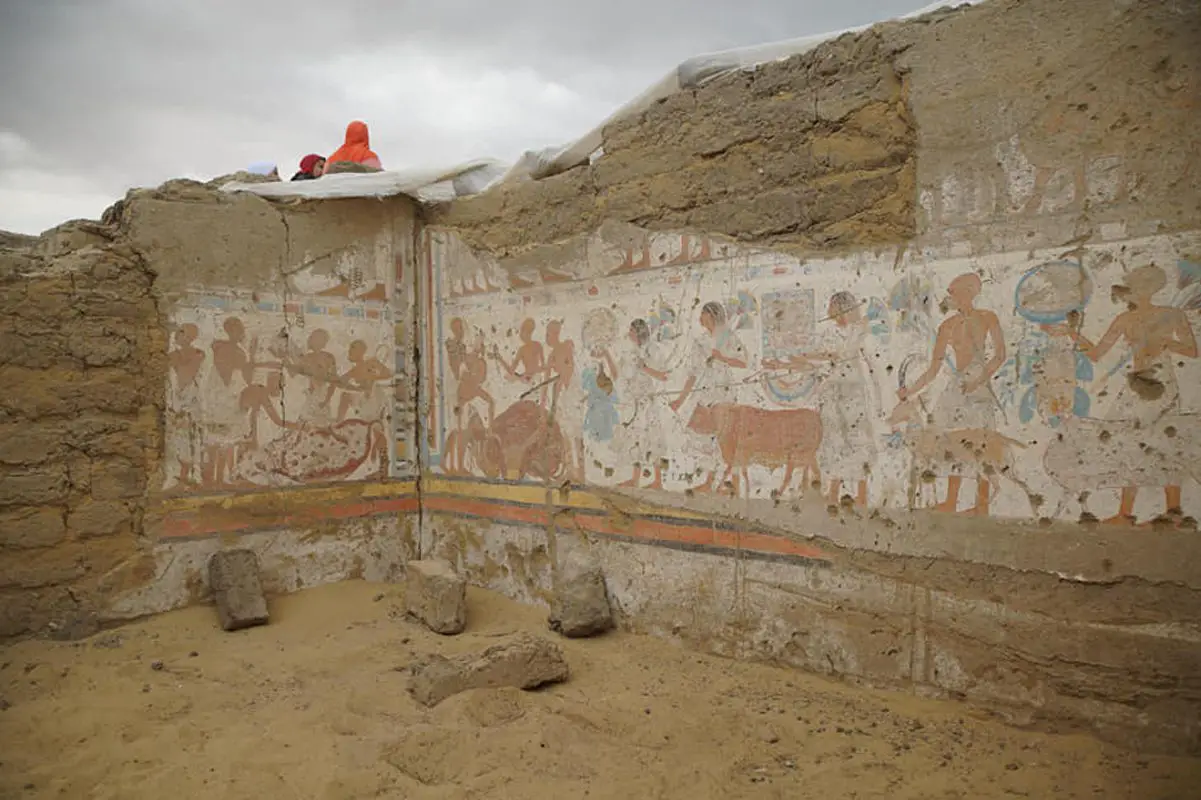Archaeologists from the Faculty of Archaeology at Cairo University have unveiled the tomb of ” Ptahemwia” (Ptah Em-Wia), at Saqqara, Egypt.
Ptahemwia lived during the reign of Ramesses II in the 19th Dynasty around 1250 BC. He served as the Pharaohs scribe, was the overseer of the cattle in the Temple of Usermaatre-Setepenre in the House of Amun, overseer of the treasury, and was responsible for the divine offerings in the Temple of Ramses II in Thebes.
Accounts of Ptahemwia were first discovered in 1859, when Théodule Devéria photographed a decorated doorway depicting his name, with subsequent discoveries including a pyramidion found in 1860 at Saqqara with his name and titles, and a statue found in Abydos in 1902 that shows Ptahemwia with a smaller statue of Osiris.
The tomb was discovered at Saqqara south of the ascending road of King Unas, and is described as a ‘cemetery-temple’ with several courtyards and a temple at the western end that would have held deities, crowned with a pyramid.
Ola el-Aguizy, head of the mission said: “What has been discovered of the tomb is its entrance built of stone carved with reliefs showing the owner of the tomb. The entrance leads to a hall whose walls have drawings painted and coloured on a layer of plaster.
Ajezi added, “The mission has not finished its work yet, because it has not yet opened the burial well; only the entrance has been discovered so far. It is not possible to confirm the presence of a mummy inside the tomb until after it is opened.”
Header Image Credit : Egyptian Ministry of Tourism and Antiquities





